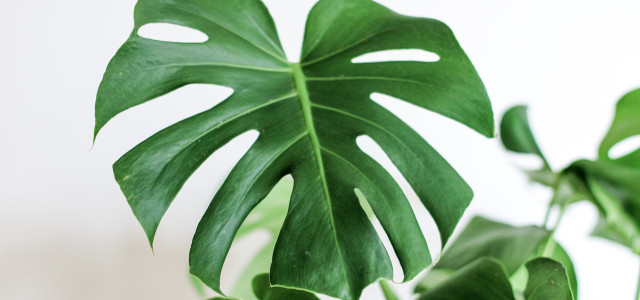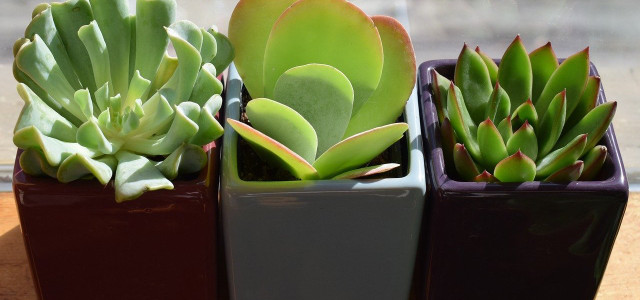We’ll show you how to easily propagate monstera plants, and share our best care tips. Monstera plants are an eye-catching addition to any room. They are also fairly simple houseplants for beginners.
While there are many different monstera varieties, the most well-known is Monstera Deliciosa, also known as the Swiss-cheese plant. These lush green tropical plants are native to Central and South America, and are actually vines that grow up trees. The holes in the leaves allow lower leaves to get sunlight, and give them a unique look which makes them a popular houseplant.
Monstera Propagation: Step by Step
In order to propagate your monstera plant, you’ll need the following:
- sharp knife, shears or razor blade
- soap and/or rubbing alcohol
- tall vase or other container
- filtered water
1. Sterilize Your Equipment
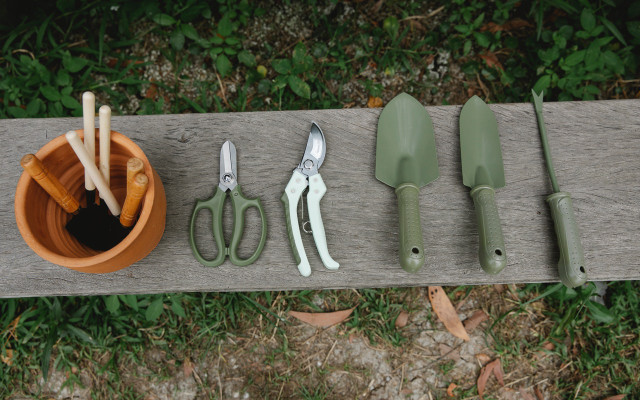
Wash your knife or shears with soap and water, then sterilize further with rubbing alcohol. This step often gets skipped as many people don’t think it’s necessary. But it protects both the parent plant and the cutting from contamination. It’s actually one of the most important steps in how to propagate monstera plants. If you’re using a new razor blade, you do not have to disinfect it – it will also provide the cleanest cut.
2. Cut the Area of your Monstera Plant You Wish to Propagate
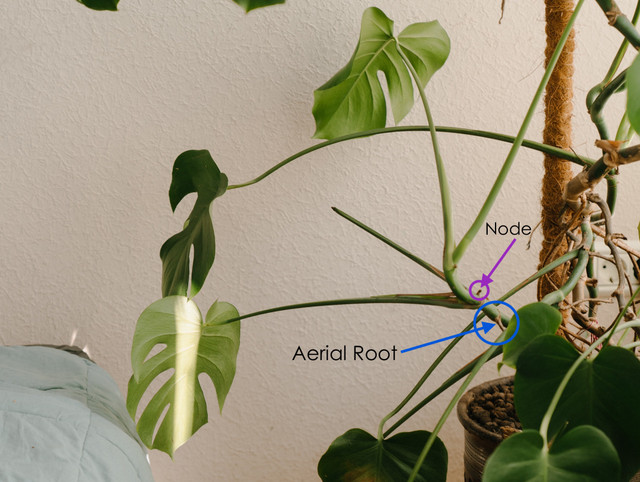


Determine which part of the parent plant you wish to cut in order to propagate the monstera plant. Then locate the node or aerial root, and cut just below it. If you cut a section with multiple leaves, cut each leaf and node into individual segments on either side of the node or aerial root.
3. Prepare the Cutting



Remove any sheathing from the stems of the leaves as they can rot when submerged in water for long periods of time. You can also cut back some of the aerial roots if you think they are too long. Then let the cuts heal or dry out slightly — this can take anywhere from a few minutes to half an hour.
4. Arrange Your Leaves
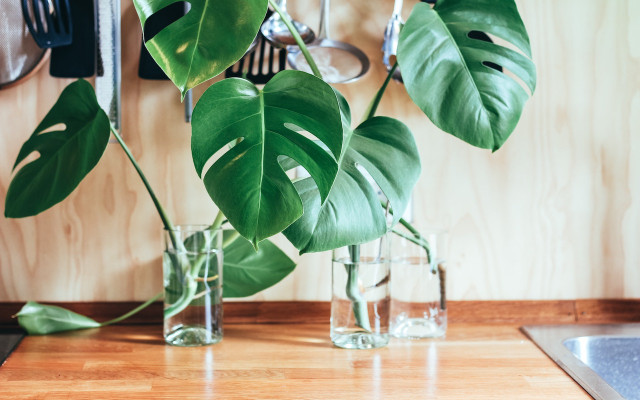


Arrange the cuttings in a vase the way you’d like them to look once potted so they develop the right root system, and then add water. Add enough to ensure all the nodes and aerial roots are covered, as this is where the new growth will come from.
5. Wait for Your Monstera Propagation to Root
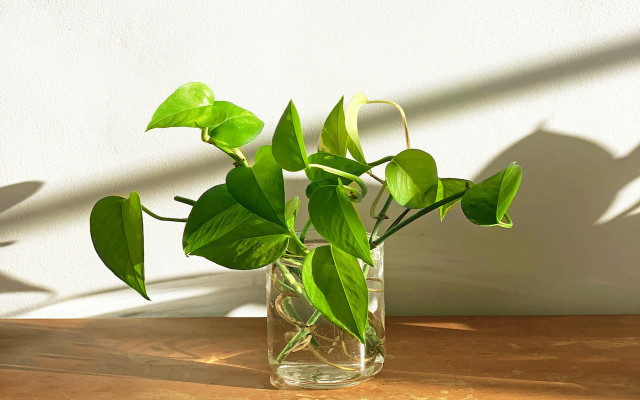


Place your vase full of cuttings in a bright spot with indirect sunlight and change the water every 3–5 days. You should start to see roots developing between 2 to 3 weeks.
Caring for Your Monstera Plant
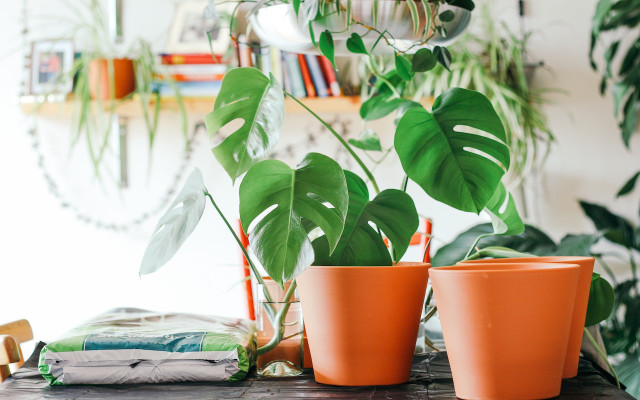


Whether you’ve purchased a monstera plant, or you’re caring for your newly potted cuttings, there are a few things you should keep in mind.
Best Soil for Propagated Monstera Cuttings
When you’re potting your propagated monstera cuttings, choose a well-draining potting mix with a pH value between 5.5 and 6.5. An indoor potting mix works well and you can find it in most hardware stores or on Amazon**.
Choosing the Right Location
Monsteras love medium to bright indirect light — direct sunlight can burn their leaves. Considering raising it up off the ground for better light exposure. Placing it near south-facing windows typically allows for the right amount of light.
Watering Tips
Make sure to water your propagated monstera plant as well as the parent plant moderately and evenly. It’s best to wait until the soil is fairly dry before watering again, usually once a week. They also prefer fairly humid environments as they are tropical plants. Keep in mind, you will probably need to water less in the winter.
Proper Fertilizer for Better Growth
During growing season (typically April – October), you should aim to fertilize your monstera plant every two weeks. You can use a 20-20-20 liquid fertilizer mix, but make sure to choose an organic one. Granular fertilizers also work — they are available at any garden center, hardware store, or on Amazon**.
Also read: How to Use Eggshells as Fertilizer for Your Garden Plants
Transplanting the Propagated Monstera Plant: A Necessary Evil
Every indoor houseplant will need to be translated at some stage. This allows the plant to expand its root system and grow. Spring, summer, and early fall are good times for repotting monsteras. Avoid winter as most plants are resting and don’t like to be disturbed.
Read on:
** Links to retailers marked with ** or underlined orange are partially partner links: If you buy here, you actively support Utopia.org, because we will receive a small part of the sales proceeds. More info.Do you like this post?






